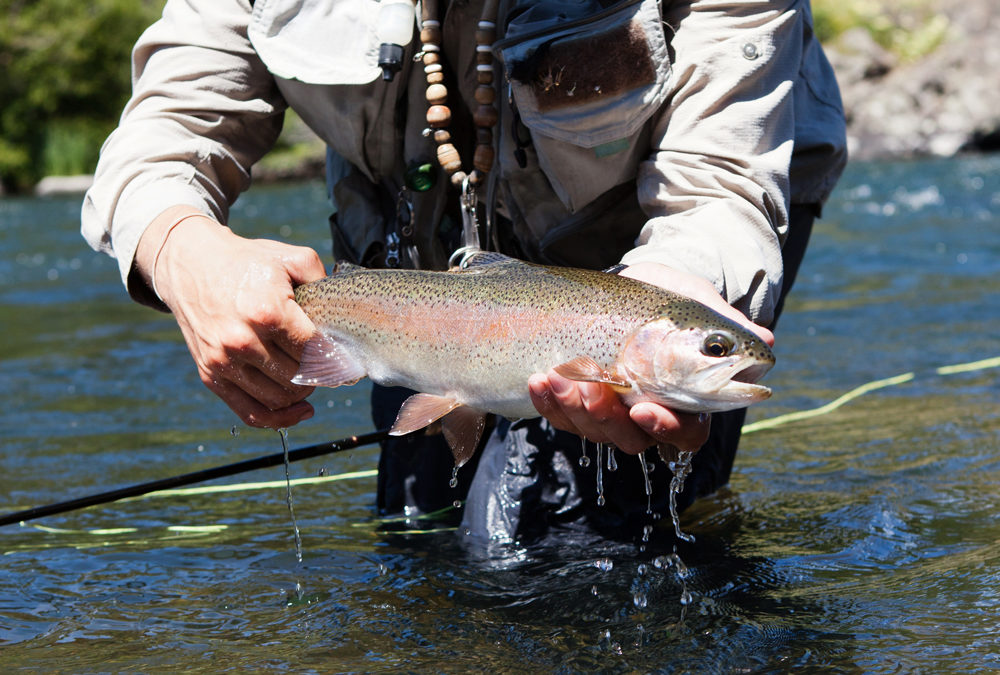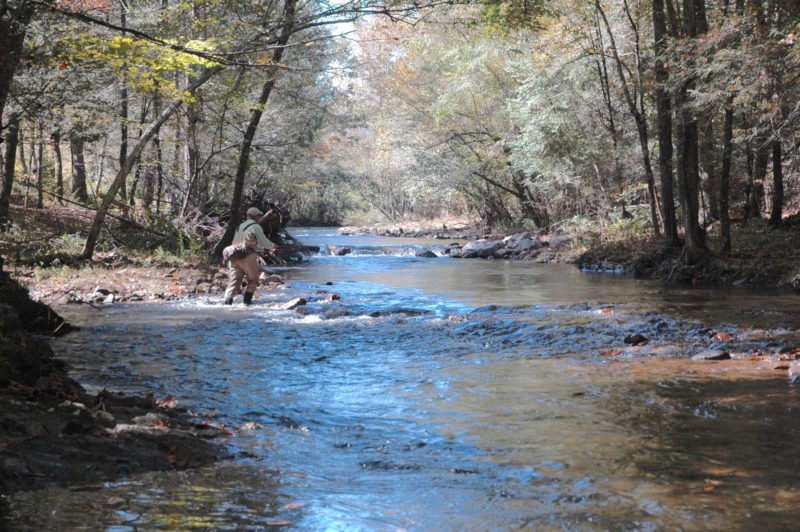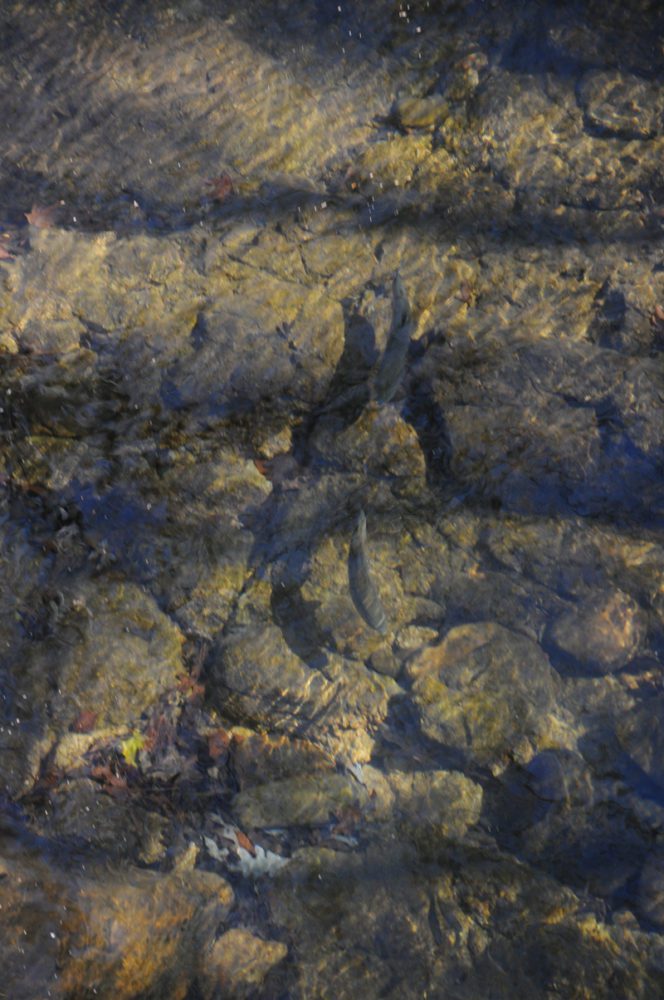Blackberry ‘Bows
September 18, 2020



 Fishing,SCA Articles
Fishing,SCA Articles

Blackberry Farm in Walland, Tennessee offers views of rolling foothills, which wind a mile of Hessee Creek, heavily stocked with rainbow trout.
Relais & Châteaux properties are among the hotels and restaurants favored by highly discriminating world travelers. Châteaus call forth the image of turreted country manor houses in France where coiffured ladies and bewigged gentlemen once preened in the court of Louis XIV. Many châteaus have been turned into relais, hotels for affluent tourists.
How then could a Relais & Châteaux estate come to be snuggled in a cove beneath Old Smoky, the land of fatback, grits, and moonshine? No turreted battlements adorn this colonial stone manse where once reigned a lady who raised hogs. The valley of her pig lot has been dammed and its pond stocked with willing bass and bream. Her house is now the inn at the core of the 4,200-acre Blackberry Farm in Walland, Tennessee, perhaps the only relais in the East catering to le pêcheur et le chasseur.
Guest rooms at Blackberry offer views of rolling foothills carpeted in the colors of the season through which winds a mile of Hessee Creek, heavily stocked with rainbows ranging between 12 and 20 inches in length. Beyond rise the Great Smokies, which offer perhaps the best wild trout fishing in the East.
Thirty minutes west, tucked into the side of a ridge of pink marble once quarried to provide stone for landmarks in our nation’s capital, is the château’s shooting club, where guests borrow Beretta over-and-unders and virtually recoil-free A400 autos to run the 14-station sporting clays course or blaze away at half a dozen incoming and outgoing birds released on the flurry range. Trap, skeet, two-stand challenge, double wobble, and five-stand round out the menu of shooting sports. Shotgunning draws the largest number of guests among Blackberry’s activities.

Rock veins of Rosgen design add structure for Blackberry’s trout.
One would not expect to find such sport for rod and gun at a resort internationally renowned for its rabbit pâté, soft cheeses, other gastronomic delights, and, increasingly, an Indian pale ale that reminds one of champagne. But it’s all here at Blackberry Farm, which was begun and is still owned and operated by the Beall family, founders of the Ruby Tuesday restaurant chain. I’ve known about the resort since writing the second edition of the guide to North America’s Greatest Fishing Lodges (Willow Creek, 2000) and profiling it in Sporting Classics in 2010.
Novice anglers as well as those with years of experience fly fishing for mountain trout will enjoy fishing Hesse Creek, which ambles gently among meadows where evenings bring sightings of whitetails, the occasional black bear, and rarely wild boars. Heavily stocked with rainbows and home to a few wild browns, it would seem that all are easy to catch. They are and they are not. They spook very easily when flows are low, and they are very well educated, having seen so many fly patterns and presentations. Still, they “eat,” as Blackberry’s guides are wont to say.
Sidearm casts are the order of the day, and dries and droppers are de rigueur. Aside from a few undercut root wads, pools are seldom more than three feet deep except downstream from cross-channel veins based on the concepts of Dave Rosgen, a hydrologist noted for wild stream design. Though its shaded course has been altered, Hesse could be any small mountain valley stream in the Appalachians.

’Bows cruise leisurely in Hesse’s runs.
I took my friend Chris to Blackberry recently as the next step in her fly fishing education. Having fished from drift boats, she’d never made a cast on a stream. Her guide was Alex Quick, manager of the farm’s activity programs. Trained as a forester at nearby University of Tennessee – Knoxville, Alex began working at Blackberry as a weekend fishing guide a decade ago. Chris describes his teaching technique as “gentle, kind, and precise.”
Intent on updating myself on how Blackberry has developed since my last visit five years ago, we had only an hour to fish. Added to the pressure was the ever-present jinx of the outdoor writer’s camera. Despite low water and high sun, Chris’ casts of the caddis/dropper combo produced a handful of quick strikes, none of which were aggressive enough for the trout to hook itself. As our schedule demanded we scoot off to tour the clays courses, I asked Alex to catch me a photo fish. Three casts later he hooked, and Chris played and landed a shiny ’bow of about 13 inches.
While the stream and pair of ponds on the property offer guests immediate access to fishing, not 30 minutes away is Great Smoky Mountains National Park. Stocking in the park ended about 40 years ago, so today’s trout are wild. Fishing there can be as easy or arduous as one wishes.

Alex nets a Blackberry ’bow.
The Little River drains most of this, the southwest quadrant of the park. Often overlooked because it’s shadowed by the main road from Townsend to Gatlinburg, the eastern prong of the Little River is rich with rainbows. The most challenging and rewarding fishing runs from Halloween through Thanksgiving when browns come up the river to spawn. Larger bead-head nymphs attract strikes from 15- to 23-inch browns. Recently one of 30 inches was brought to net. Anglers who fish tributaries at elevations above 3,000 feet often land native southern-strain brook trout in the six- to ten-inch range thanks to aggressive and sometimes controversial restoration efforts led by now retired park fisheries biologist Steve Moore.
If the Little River watershed doesn’t offer enough variety, cross the divide at Bear Pen Gap, drive the length of limestone-floored Cades Cove, and fish Abrams Creek’s horseshoe and the plunge pool below Abrams Falls. Blackberry guests can also float cold TVA Clinch, Holston, South Holston, and Watauga tailwaters. The best of that lot is the South Holston, an hour and a half’s ride to the northeast.
Park streams, tailwaters, and Hesse Creek are open year-round. Anglers should not let the colder seasons dissuade them from wielding a rod. Not only will radiant energy from the sun warm your back, but in the depth of winter it often turns on mountain trout and can sometimes stimulate a hatch.
